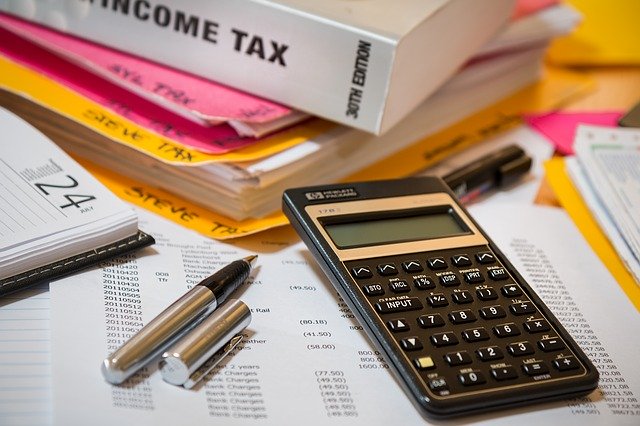FUBA COVID-19 Update: CDC Guidance for Employers with Suspected or Confirmed COVID Cases
The Centers for Disease Control (CDC) has issued guidance for employers that have a suspected or confirmed case of COVID-19 at their workplace. This e-Alert is a summary of the CDC’s information. Details can be found at the CDC’s website. What should I do if an employee comes to work with COVID-19 symptoms? Employees who have symptoms when they arrive at work or become sick during the day should immediately be separated from other employees, customers, and visitors and sent home. Employees who develop symptoms outside of work should notify their supervisor and stay home.Sick employees should follow the CDC recommended steps. Employees should not return to work until they have met the criteria to stop home isolation and have consulted with a healthcare provider. Employers should not require sick employees to provide a COVID-19 test result or healthcare provider’s note to validate their illness, qualify for sick leave, or return to work. Healthcare provider offices and medical facilities may be extremely busy and not able to provide such documentation in a timely manner. What should I do if an employee is suspected or confirmed to have COVID-19? In most cases, you do not need to shut down your workplace. But you should close off any areas that the sick person used for prolonged periods of time. Wait 24 hours (or as long as possible) before cleaning and disinfecting to minimize potential for other employees being exposed to respiratory droplets. Follow the CDC cleaning and disinfection recommendations. In addition to cleaning and disinfecting, you should determine which employees may have been exposed to the virus and need to take additional precautions: If an employee is confirmed to have COVID-19, employers should inform the other employees of their possible exposure to COVID-19 in the workplace but should maintain confidentiality by not revealing the name of the employee who tested positive. Employees who test positive for COVID-19 should not come to work and should isolate at home if they do not need to be hospitalized and follow the CDC recommended steps. Workplaces should follow the CDC’s recommended precautions for people exposed to COVID and tell potentially exposed employees to stay home for 14 days and self-monitor for symptoms. Employees should not return to work until they have met the criteria to stop home isolation and have consulted with a healthcare provider. If employees have been exposed but are not showing symptoms, should I allow them to work? Employees may have been exposed if they have been within 6 feet of a person with COVID-19 for a prolonged period of time. Exposed employees who do not have symptoms should remain at home and practice social distancing for 14 days. All other employees should self-monitor for symptoms and wear cloth face coverings when in public. If they develop symptoms, they should notify their supervisor and stay home. What should I do if I find our several days later, after an employee worked, that they were diagnosed with COVID? If it has been less than 7 days since the sick employee was in the workplace, you should clean and disinfect all areas used by the sick employee following the CDC cleaning and disinfection recommendations. If it has been 7 or more days since the sick employee was in the workplace, additional cleaning and disinfection is not necessary. Continue routinely cleaning and disinfecting all high-touch surfaces in the workplace. Other employees may have been exposed if they were in within 6 feet of the sick employee for a prolonged period of time (longer than 15 minutes): If an employee is confirmed to have COVID-19, you should inform the other employees of their possible exposure to COVID-19 in the workplace but maintain confidentiality by not revealing the name of the employee who tested positive. Employees who have symptoms should self-isolate and follow the CDC recommended steps. Employees who were potentially exposed but have no symptoms should remain at home or in a comparable setting and practice social distancing for 14 days. Employees not considered exposed should self-monitor for symptoms. If they develop symptoms, they should notify their supervisor and stay home. When should an employee suspected or confirmed with having COVID-19 return to work? Employers do not need to require a sick employee to provide a negative COVID-19 test result or healthcare provider’s note to return to work. Employees with COVID-19 who have stayed home can stop home isolation and return to work when they have met one of the following criteria: Persons with COVID-19 who have symptoms may return to work if: They have gone at least 3 days (72 hours) without a fever and have improvement in respiratory symptoms (cough, shortness of breath); and At least 10 days have passed since their symptoms first appeared. OR They have no fever and They have improvement in respiratory symptoms (cough, shortness of breath), and They have negative results from at least two consecutive COVID tests done at least 24 hours apart. People who test positive for COVID-19 but don’t have symptoms may return to work if: At least 10 days have passed since the date of their first positive COVID-19 test assuming they have not subsequently developed symptoms since then. OR They have negative results from at least two consecutive COVID tests done at least 24 hours apart. FUBA members with questions about COVID-19 can call us at 800-262-4483 or email our experts for assistance. Click here for FUBA’s dedicated Coronavirus Resources page for Florida businesses.
FUBA COVID-19 Update: CDC Guidance for Employers with Suspected or Confirmed COVID Cases Read More »



